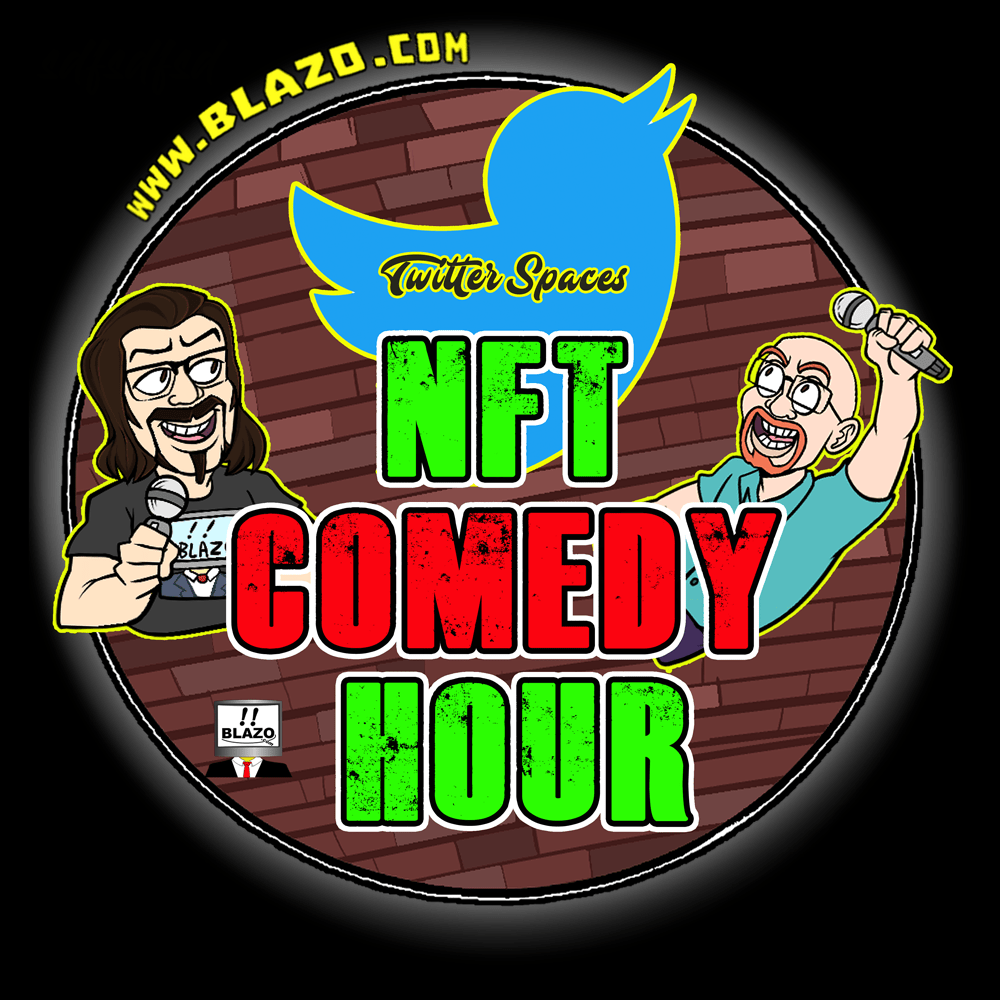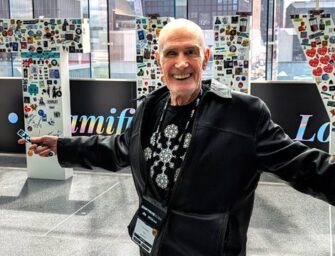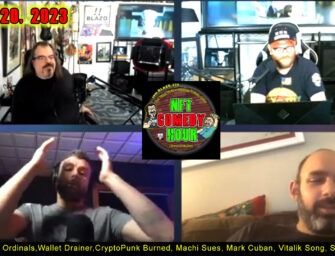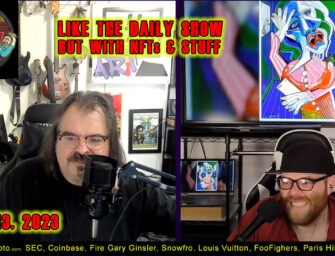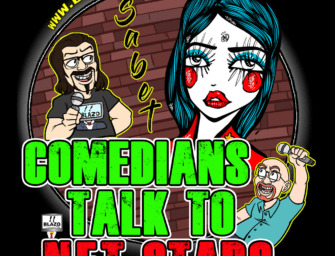Watch all of the Rabbi’s Videos Here
The life of Sol Blazowitz AKA: Rabbi Blazo is almost too amazing to believe. I have spent the last 3 years of my life researching and writing what will soon be THE definitive book on the life of this wonderful man. As a special treat to BLAZO!! visitors I have created this brief biography for you to view.
Shenckle Dipstein – Author
A Sol Is Born!
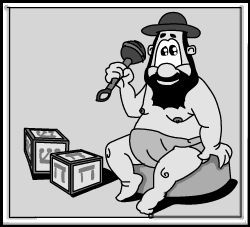
Born on the majestic hills of Akko, nestled on the breezy shores of the Mediterranean Coast, Sol Blazowitz grew up with dreams of being a world famous crooner. His early days in Israel would be spent listening to traditional Jewish folk songs and everything from James Brown to the Beatles, Perry Como to Barbara Striesand, and his all-time favorite, Neil Diamond. Sol’s father, Rabbi Jeremiah Blazowitz recalls his son’s obsession with the famous singer:
“Guttenyu, the kid listened to that damn Sweet Caroline fifty times an hour! I’m asking him everyday, ‘Who is this Caroline?’ And ‘How sweet can one person be that you have to sing about them hundred times over?'”
The Carnival Barker
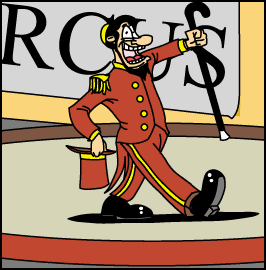
Sol’s love of all forms of international music lead him to an early career as a traveling carnival barker in which his musical audience warm-ups became legendary. They combined Motown soul with traditional Jewish psalms wrapped in an amazingly developed stage presence. Carnival owner, Pitsy Schorsch remembers:
“I’ll tell you one thing about Sol that very few people know today, as a singer and performer he had no peer. But as a barker, he stunk, and that was what he was paid to do, so I fired
Pitsy Schorsch
The Moses Blues
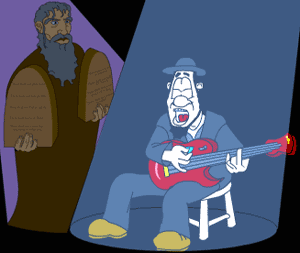
It was during his training at the Jerusalem Whimsy Shul that Sol became enamored in the alluring tenants of not only his religion but show business. Chief Rebbe, Skokie Emunah saw a maverick spirit in his student back then:
“He was a bit of a rebel. Sol wanted to teach and pray, but most at the school found it unwise that he chose songs like Great Balls Of Fire and Tutti Frutti to sing as the Cantor in Temple. It was then we knew he wouldn’t be the ordinary Rabbi.” Fellow student Blea Klezmer added…
“Sol? He was a kook, but we all loved him. He brought this harmonica into Talmud class and began accompanying the readings with a blow on the harp and a four-bar blues riff about Moses. He had this amazing Noah thing in which he incorporated a Muddy Waters classic. And he was a hoot at the Saturday mixers with his bass drum, kazoo review.”
Although Sol was happy learning the ways of his faith and jamming with the locals, he longed to travel to America and perform for real. Owner of the premier rock club in Jerusalem during the summer of 1967 called The Riddled Bullet, Shlomo Rosebrook recalls that magical time:
“Many of the nightclubs in Southern Israel in the late 60’s didn’t have that cool, psychedelic feel. Many of the clubs didn’t exist. They were all blown up during the revolution. We had no Summer Of Love
schlomo rosebrook
Sol Oddity
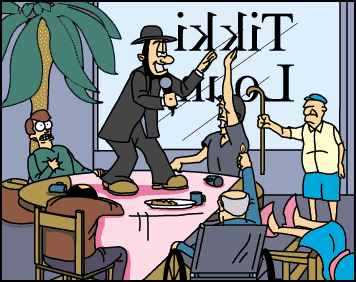
But the good Rabbi persevered and began to develop an act combining a rock n’ roll spirit with down home Yiddish wisdom. When he reached the states in 1969 Sol was playing weeknight gigs at the Paramount resort in the Catskills, New York. Hotel manager, Tippy Goldstein remembers the Rabbi’s development as a performer:
“We had this Tikki Lounge set up for all the seniors and the Swingin’ Rabbi, that’s what we were calling him then, the Swingin’ Rabbi, would come tooling on stage and rip through Born To Be Wild and some Hendrix thing and he was super duper. Granted, we had some audience casualties, strokes and such, but man could that guy rock!”
Mostly, the Swingin’ Rabbi never let his message be lost in the showbiz glitter. Record executive, Rory Kleinman remembers:
“I was at a show once in the Catskills and Sol does this Moon Landing Tribute with David Bowie’s Space Oddity and the place explodes. I was at the Meatloaf premier at Epic Records in New Orleans in ’77 when the place went nuts, but this was bigger! People were on their chairs waving American flags he’d given out before the show. Man, he was bummed when I told him that in Bowie’s song, the hero, Major Tom dies in space and that it was a metaphor for the failure of technology. He still refuses to do the goddamn song anymore.”
Pissed at Zimmerman
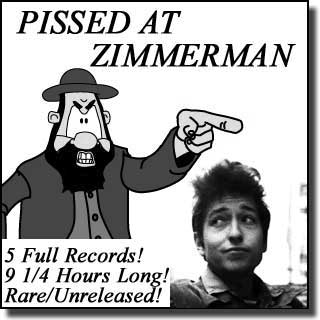
Sol began to get press in the greater New York area when Bob Dylan came calling. Dylan was living in the hamlet of nearby Woodstock recording what would later be called The Basement Tapes with The Band and asked the Rabbi to stop by and cut some tracks. But events went awry when the two argued for most of the session over whether the legendary folk singer should change his name back to Robert Zimmerman and do a tribute album to Rabbi Hillel. The Band’s lead guitarist, Robbie Robertson was there:
“No one talked about Dylan’s Jewish heritage for eight years and then Blazowitz starts convincing Bob to change his name back. He almost did it when Columbia Records mentioned legal clauses in his contract and threatened to yank Dylan’s new album.”
robbie robertson
That 6 hour argument along with many Dylan/Blazowitz jams is to date the most bootlegged Dylan material of that period. It eventually became a five record set often entitled Pissed At Zimmerman.
Janis is a Jew?
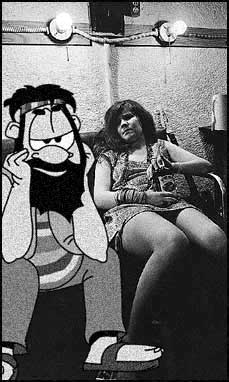
Sol’s big break came later that fateful summer when the Woodstock Music & Art Fair was gearing up merely miles away in Bethel, New York. He hitched his way down the NY Thruway and wound up backstage thanks to Janis Joplin. Rabbi Blazo’s current manager, Sid Brandt recounts the meeting:
“It wasn’t too publicized during her career, but Joplin was a devout Hassidic Jew. They wouldn’t let her go to Temple or anything because of, you know, the alcoholic, drug addict, lesbian thing, but besides that she was a pretty serious practicing Hassidic, and when she caught The Swingin’ Rabbi show at Grossingers she told Sol to come over to the concert the next weekend.”
When Sol arrived he was immediately ushered backstage where Joplin had passed out and when she was due to perform he filled in with her band, Big Brother and the Holding Company. Original Woodstock sponsor/promoter, Michael Lang offers insight to this momentous event.
“People point to Santana and Joe Cocker as show stoppers at Woodstock, but for my money, and believe me I lost much of it that weekend, Sol Blazowitz was the real deal.”
michael lang
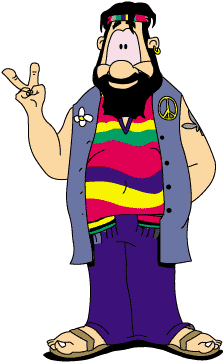
But unfortunately the performance never made it into the movie or appears on the album. Warner Bros. archivist, Barry Zack remembers:
“When Janis woke up she was pretty pissed that the Rabbi stole the show. She was going to sue somebody, but then she died and it was too late to legally release the performance. Plus I don’t think Blazowitz was too happy with all the nudity at the concert, so he didn’t fight that hard for it.”
Viva Las Vegas
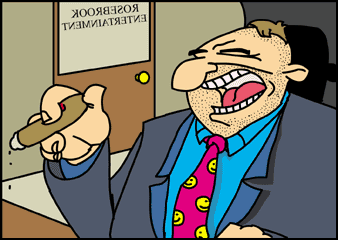
The Hippie movement was no place for the show-stopping/Torah speeches the Swingin’ Rabbi Show offered. Eventually, in a difficult career decision, Sol headed to the live entertainment capitol of the world, Las Vegas. The Rabbi’s former manager, Guy Peppi still has reservations about the move today:
“We weren’t sure if Sol knew what he was getting into. Vegas was so over-the-top corrupted in the early ’70s we thought they’d eat him alive. But he’d heard that Neil Diamond was packing them in out there and he was adamant about going. For better or worse, I think it changed him.”
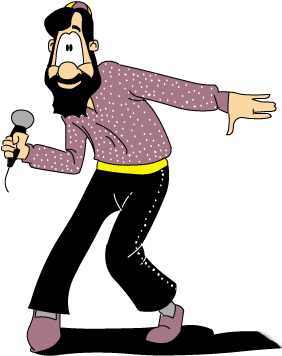
At first things were rough for Sol in Las Vegas, but according to his management and many of the casino promoters of the time, the Swingin’ Rabbi Show reached new heights when Sol added his Funk & Boogie Review replete with a horn section.
Soon, there were only a few key musical performers who could headline with him. Diamond Jack Glitz, who often opened shows for Sol, was a firsthand witness to the Vegas era.
“Tom Jones, Elvis Presley and Sol Blazowitz, that was the holy trio. That hep cat swung it hard and fast back then. No one could fashion a tune like the Rabbi! The chicks dug him and celebrities flocked to his dressing room. There was always something happening around the dude. One night Sinatra comes in and can’t get a table and Sol tells him, ‘Chairman… you can sit on stage.’ True story!”
jack glitz
Disco Fever
But, alas, even Vegas couldn’t hold Sol’s interest. By the late ’70s, disco was all the rage and The Swingin’ Rabbi Show had moved with the times, becoming The Dancin’ Rabbi Show. The host of the wildly popular primetime show, Dance Fever, Denny Terrio recalls the Rabbi’s amazing musical transformation.
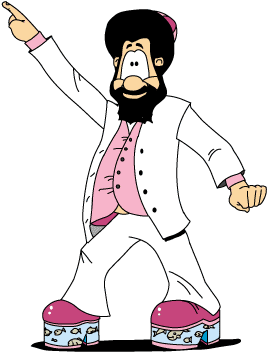
“At that time the Rabbi was putting a lot of dance routines into the act. We had him on one week to sing, but God bless him, he insisted on dancing, and although he was pretty chubby and was wearing these huge platform shoes with live gold fish swimming in them, he could cut that rug, bro.”
Sol’s appearances on television have become some of Hollywood’s most incredible stories. One particular stint on the Merv Griffin show in ’73 changed the face of daytime TV. Producer, Jane Stemple claims Sol invented the modern daytime television era that day.
“Blazowitz comes on to talk about Vegas polyester fashions and musical tragedy and takes over the show. He’s grabbing the handheld mike from Merv and going into the audience solving problems and getting a forum going. It was amazing! So, don’t you know, a young Marlo Thomas happened to be there that day as a guest and years later she shared her vivid memories of the show with her husband, Phil”
May a Disease Enter Their Gums!

Sol’s ability to see new trends in entertainment was perhaps his greatest forte. At an NBC network party in the mid 70’s he began blabbering on about the lack of real live television since Ed Sullivan was canceled and a young producer by the name of Lorne Michaels was listening. Chief NBC programmer at the time, Tony Buccelli admits that one of the network’s stalwart broadcasts would not have come to fruition without the Rabbi’s foresight.
“Lorne comes to me the one day with the idea for Saturday Night Live. We practically laughed him out of the office until he said this Rabbi had told him the show would only work if it was put on late at night. Listen, we didn’t know about any ‘Rabbi’, but the late night idea caught our attention!”
Unfortunately, although his ideas were the inspiration for the show, the Rabbi has never been asked to host or even perform on SNL. When asked about this obviously “sore subject” the Rabbi waved a hand and said:
“Sheveig!!! Drai Zich!!! Zol dir vaksen tzibbeles fun pupik, Me lozt nit leben, Gottenyu… A krenk zol im arayn in di yosles” Loosely translated means: “Shut up! Turn around and keep going, get moving!! Onions should grow from your navel!! They don’t let you live, people just keep aggravating me!! Oh God!! May a disease enter their gums!!!”.
rabbi blazo
Diamonds are a Sol’s Best Friend
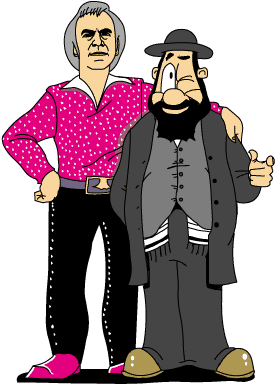
In 1980 Sol was offered his dream job, working as the rabbinical consultant on the Neil Diamond’s new movie, The Jazz Singer. In the film Diamond plays a conflicted cantor who leaves his family and religious responsibilities and sets out on the road to find fame and fortune in the music business. What with the obvious similarities between Sol’s life and Diamond’s character, a fast friendship was formed. After three weeks holed up in a penthouse suite at the Sands Hotel in Las Vegas, Diamond and Blazowitz emerged with an entire rewrite of the script that survived almost completely intact as the Jazz Singer movie you now know and love. Again, despite his best efforts, every scene Sol wrote himself into was taken out and he did not appear in the film.
“The producers felt the Rabbi’s character was actually too strong and that it would upstage Diamond,”
industry insider
Despite the set back the Rabbi continued to unconditionally support Diamond even though many of his friends felt that it was secretly the superstar’s ego and not the producers that kept Sol out of the movie. To this day, the singer/songwriter sites the Rabbi for “putting his career back on track” and bringing him closer to God. In just a few years that steadfast belief in Diamond would prove to be the best move of Sol’s career.
The Torah Hip Hop
By the late 80s, with music videos and hip-hop in full force, Sol’s always animated performances should have been perfect for the times, but there was a hang-up about a song called The Torah Hop. Former manager, Guy Peppi expounds on the fallout:
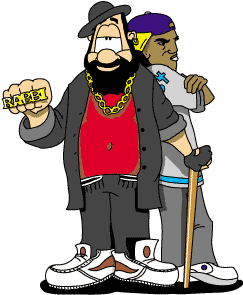
“That was the end of my relationship with Sol. He wanted the video to be of a stereo playing in the background while he read scripture, very avante guarde stuff. He wasn’t hip to the idea of lip synching. So, despite my disapproval we went ahead with the project. MTV rejected it, saying ‘the damn thing is too confusing and way too long’. It played once at four in the morning on local cable’s Jewish American Hour. It went on forever with a dramatic opening and the Rabbi reading from the Torah. But hey, at least it was shorter than the Thriller video, which Michael Jackson has admitted several times to close associates, is a loose derivative of The Torah Hop clip”.
The failure of the adventurous and experimental, Torah Hop video convinced the Rabbi to reluctantly embrace the emerging hip-hop culture. This lead him to the doorstep of maverick rap producer, Jiffy Jive who convinced Sol to change his stage name to Jam Master Oy-Vey and helped him co-write the controversial, Rabbi’s Delight. Jive remembers the sessions fondly:
“Rabbi’s Delight was the bomb. We were so on the edge we almost fell off.”
jiffy jive
The Rabbi’s foray into to the rap sound ended quickly when a feud began between another rabbinical rapper called Street Mench erupted. Luckily it ended peacefully when both men fell asleep after hours of trading prophetic barbs about Ezekial and Elijah and an exhausting marathon attempting to out-quote one another on scripture.
By now the 80’s were in full swing and Sol was contemplating his next move when he was offered a dream job
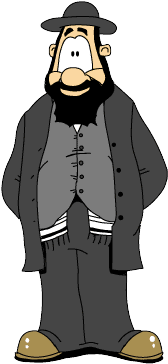
A Rabbi is Born
Times continued to be lean in the ’90s for Sol as the hair bands gave way to grunge and hip hop, and it all passed him by. That is until late 1999 when BLAZO!!’s Mighty Chief Wonka heard an old tape of the Rabbi at an industry party hosted by none other than Sol’s musical hero and influence, Neil Diamond. During Diamond’s party in which his recordings were often featured, Chief Wonka was more than impressed with Sol’s flair for a song. The normally secretive and illusive Wonka gushes about a truly unique and exciting talent for the new millennium:
“I was always a fan. We’ve been looking for the Rabbi for years, and we knew right then we had to have him. He is the anchor, the cornerstone of this network!”
chief wonka
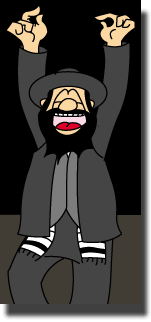
The negotiations between BLAZO!! and the Rabbi were intense, but rewarding for both sides. The name Blazowitz endeared Sol to the Chief for obvious reasons, but Wonka had a clear and nonnegotiable vision of what the Rabbi needed to do. The Chief demanded Blazowitz change his legal name to “Rabbi Blazo” and insisted he play show after show in Las Vegas where he would stand on stage alone and croon his unedited versions of his favorite songs from the last 50 years. Wonka further insisted that the Rabbi “should never feel restricted” and that he was to “add whatever important messages and commentary to any song he would sing.” An interesting caveat to the contract with BLAZO!! promised that the Rabbi would “perform at a yearly Seder for the BLAZO!! Dwarves and their families”.
After hours of useless negotiations, because there is no bending the Mighty Chief when he gets going, Sol joyfully agreed and the deal was done. BLAZO!! insider, Bart Francis believes having Rabbi Blazo on board heralds the dawn of a new age in cyber entertainment:
“We’ve never seen the Chief so happy. Of course, we never see the Chief much at all, but he was definitely friggin’ happy.”
Thus was born the lovable, affable, unshakable, boogie-woogie, Rabbi Blazo you now know and love! A man for all seasons and songs with a healthy spoonful of down-home rockin’ Yiddish wisdom!!!



